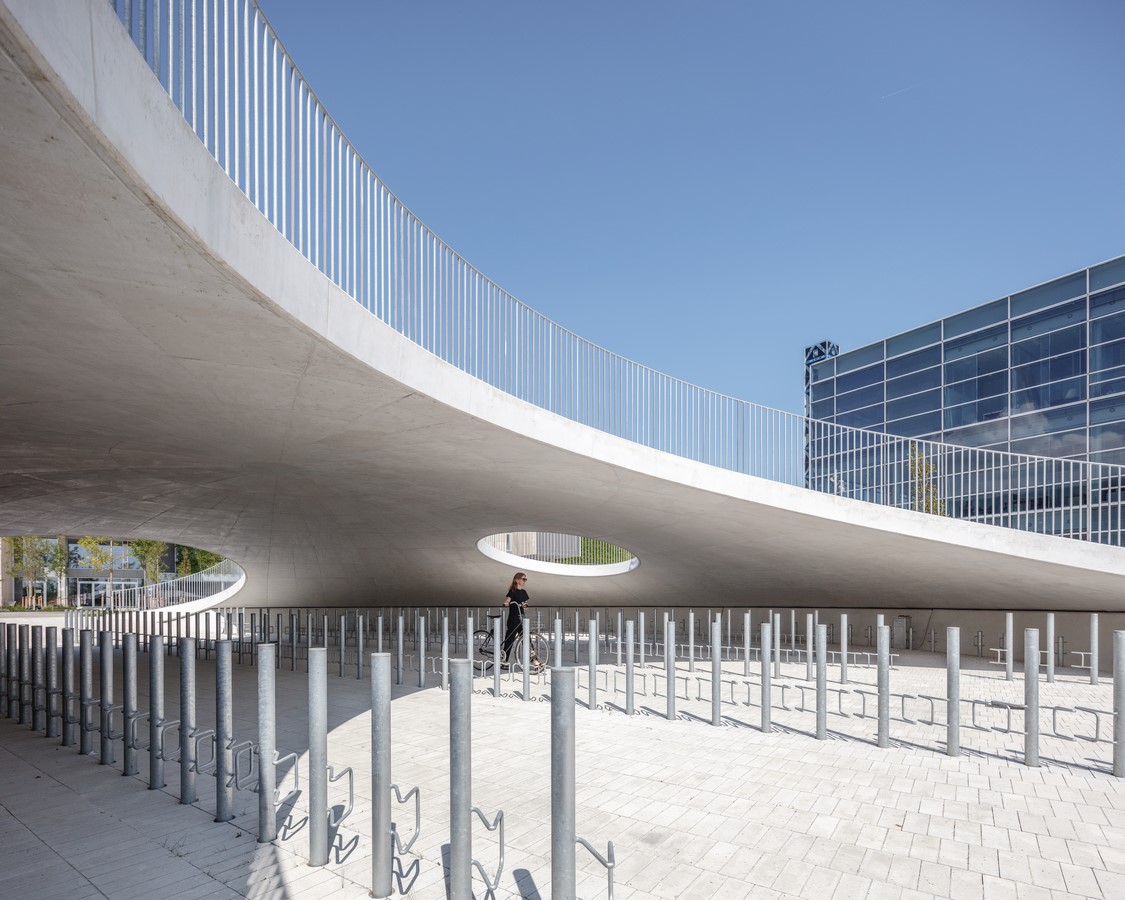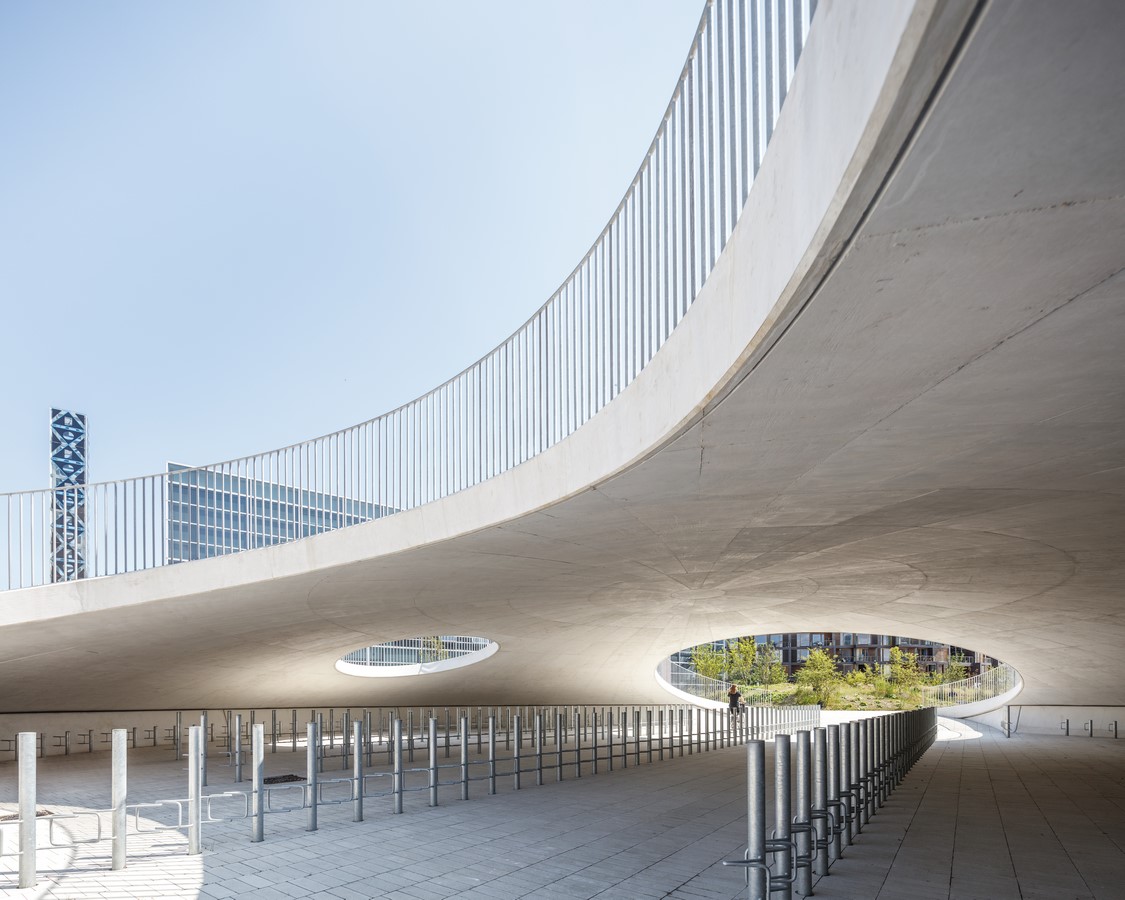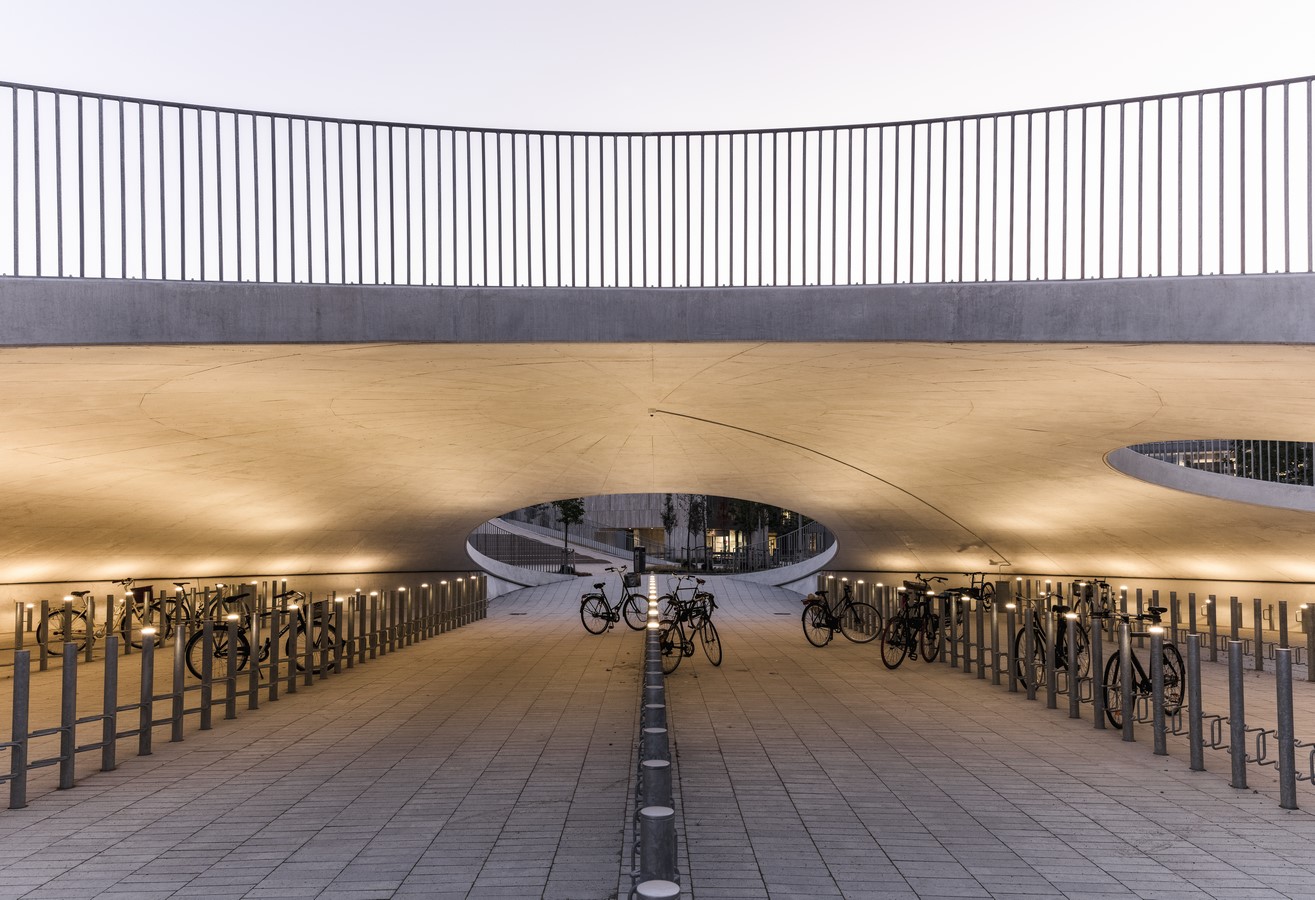Late August was the official opening of a new square in Copenhagen: Karen Blixens Plads. The square has a unique undulating landscape with hollow bicycle hills and low beds creating a new and innova- tive way to park bicycles. It is one of the largest public spaces in Copenhagen and has room for more than 2,000 parked bicycles. Cobe, under Dan Stubbergaard’s leadership, created the design in close collaboration with EKJ Consulting Engineers.
Location: Copenhagen, Denmark
Client: Danish Building and Property Agency
Private donation: A.P. Møller og Hustru Chastine Mc-Kinney Møllers Fond til almene Formaal Program: Urban space at the University of Copenhagen
Size: 21,415 m2
Architect: Cobe
Engineers: EKJ Consulting Engineers, CN3, Vind-Vind
Contractors: M. J. Eriksson (construction contract), NCC Denmark (concrete contract)
Photography Credits: Rasmus Hjortshøj – COAST

At more than 20,000 m2 Karen Blixens Plads is one of the largest public squares in Copenhagen. Situated between the University of Copenhagen and the Royal Danish Library at the university’s campus, the open and welcoming urban space is an innovative, spectacular and multi-functional design that accommodates and promotes green transportation, climate change adaptation and biodiversity. The project was supported by a generous donation from the private Danish foundation A.P. Møller Fonden.
Innovative bicycle parking
The combined public square and university plaza is designed as a carpet that covers an undulating terrain of small hills and breaks the large space up into smaller zones with room for activities both on and inside the hills. The three bicycle hills were created as cast concrete shells clad with hand-laid tiles in colors echoing the exteriors of the surrounding university buildings.

In addition to serving as an active meeting place for students, employees and locals, the square also con- tains a high-capacity bicycle parking space for the many users of the university, including 16,000 students and 2,000 employees. The innovative and unique design has room for more than 2,000 parked bicycles.
”Copenhagen is one of the world’s leading bicycle cities, with more than 40 per cent of the city’s inhabitants riding their bike for their daily commute. That requires a new and flexible approach to bicycle parking. In previous projects we have developed innovative bicycle parking solutions that form a natural element in the environment. By Nørreport Station, for example, we created the so-called bicycle beds, and here, at Karen Blixen Plads, the solution is bicycle hills. The integrated hilly landscape creates a space with a large capacity for bicycles, two-thirds of them in covered spaces inside the bicycle hills,” says Dan Stubbergaard, architect and founder of Cobe.
Green profile
In a soft transition, Karen Blixens Plads brings together the university’s need for urban spaces with the open landscape of the neighboring commons. The north side of the square, where the three main entrances to the university are located, is an open and multi-purpose space. To the south, hilly, undulating meadowland connects the campus with the commons. In addition to bringing nature into the campus the landscape also contributes to climate change adaptation by adding a capacity to handle stormwater. Delaying rain- water in depressions in the landscape utilizes the recreational values of the water and creates small wet biotopes that support biodiversity, enable rainwater evaporation and supplements the canal in case of extreme precipitation, thus contributing to climate change adaptation. The design uses simple, sturdy and durable materials, just as lighting and furnishings are kept to a few, simple elements to ensure a sustainable urban space. All the selected elements are low-maintenance and contribute to the square’s green profile.

Outdoor auditorium
A central feature is an outdoor auditorium with seating for up to 1,000 people on the manmade hills. The hilltops offer additional standing room for concerts or other large public events.
”All in all, we have created a unique urban space based on three main principles: improving the connection between landscape and urban space, integrating optimal green spaces with a large capacity for bicycle parking and creating a space that offers good social meeting places and learning environments. The almost cathedral-like form of the bicycle hills further offers an aesthetic experience in its own right, both when people park their bikes and when they meet at the hills for lectures, group work, concerts or Friday afternoon socializing,” says Cobe’s founder, Dan Stubbergaard.
About Cobe
Cobe is an architecture firm founded in Copenhagen, DK, in 2006 by the architect Dan Stubbergaard, and aspires to create surroundings that actively contribute to extraordinary everyday life. Among the firm’s most distinctive projects are The Silo in Copenhagen’s northern docklands – a transformation of a former grain-storage silo into an apartment building, the urban space Karen Blixens Plads at Copenha- gen’s University, and adidas’ global headquarters HALFTIME in Germany. Read more here: www.cobe.dk.



















